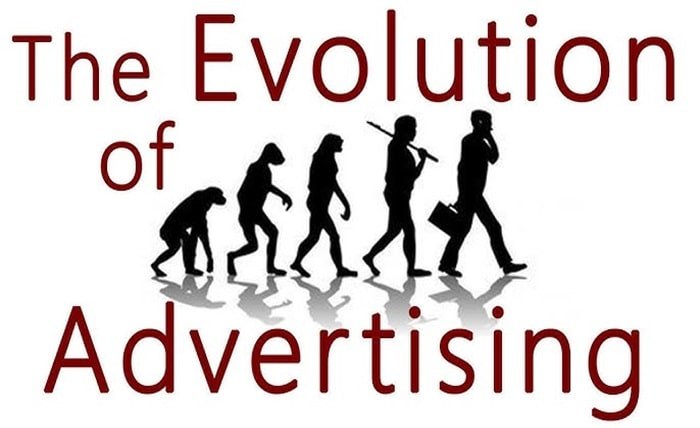The Evolution of Advertising

The Transformation of Advertising Over Time
The world of advertising has undergone a dramatic transformation over the last few decades, shifting from traditional methods to innovative, digital-first strategies. What was once dominated by billboards, print media, and television commercials has evolved into a dynamic ecosystem of online platforms, data-driven insights, and interactive campaigns. These modern approaches are not only reshaping the way businesses reach their audiences but also how consumers engage with brands. In this article, we explore the evolution of advertising and highlight the cutting-edge methods that are helping businesses thrive in today’s competitive digital landscape.
The Foundation of Traditional Advertising
Traditional advertising methods laid the groundwork for many of the principles that still guide modern marketing strategies. In the mid-20th century, television commercials and print ads were the pinnacle of advertising, offering brands a way to reach large audiences through mass media. However, these methods were often expensive and lacked precise targeting. Advertisers had limited tools to measure the effectiveness of their campaigns, relying on broad metrics like viewership and circulation. While traditional advertising is far from obsolete—radio, TV, and outdoor advertising still hold value—it has largely been supplemented by more flexible and data-driven approaches.
The Advent of Digital Advertising
The advent of the internet marked a turning point in advertising history. Early forms of digital advertising, such as banner ads and email campaigns, gave brands new ways to connect with consumers. These methods, while innovative for their time, often felt intrusive and didn’t always resonate with audiences. Over time, advertisers recognized the need for more personalized and engaging strategies. This realization gave rise to digital advertising services, which use advanced analytics and targeting technologies to deliver tailored messages to specific audiences. With the ability to track user behavior and preferences, digital advertising has become a more effective and measurable tool for businesses.
Search Engine Marketing: A Game-Changer
One of the most significant innovations in modern advertising is search engine marketing (SEM), which enables brands to appear at the top of search results for relevant queries. Platforms like Google Ads have transformed how businesses attract potential customers by focusing on intent-based marketing. For example, a user searching for “best running shoes” is likely closer to making a purchase, making them an ideal target for ads. SEM combines precision targeting with performance-based pricing models, such as pay-per-click (PPC), ensuring advertisers only pay when users engage with their ads. This approach has revolutionized how brands compete for visibility in crowded markets.
Social Media: Building Communities and Driving Conversions
Social media platforms have also become a cornerstone of modern advertising, offering unparalleled opportunities for audience engagement. Platforms like Facebook, Instagram, LinkedIn, and TikTok have created ecosystems where brands can build communities, foster relationships, and drive conversions. Social media ads are particularly effective because they integrate seamlessly with organic content, creating a more natural and less disruptive user experience. Additionally, advanced targeting options allow advertisers to reach specific demographics, such as age groups, interests, and even purchasing behaviors. This precision makes social media advertising a powerful tool for businesses of all sizes.
The Role of Programmatic Advertising
Another key development in modern advertising is the rise of programmatic advertising, which uses artificial intelligence (AI) and machine learning to automate ad placements. This technology enables advertisers to buy and place ads in real time, targeting users based on data such as browsing habits, location, and device usage. Unlike traditional methods that require manual negotiations and fixed placements, programmatic advertising streamlines the process and ensures ads are delivered to the right audience at the right time. As a result, businesses can achieve greater efficiency and better results while reducing wasted ad spend.
The Dominance of Video Advertising
Video advertising has also emerged as a dominant force in the digital realm, with platforms like YouTube and TikTok leading the charge. Video content is inherently engaging, combining visuals, audio, and storytelling to capture attention and evoke emotion. Brands are using video ads not only to promote products but also to build trust and convey their values. Short-form videos, live streams, and interactive content have become particularly popular, offering new ways to connect with audiences. The rise of video advertising highlights the importance of creativity and authenticity in building meaningful relationships with consumers.
The Future of Advertising: Value and Ethics
As advertising continues to evolve, the focus is shifting toward creating value-driven, consumer-centric experiences. The integration of technologies like augmented reality (AR) and virtual reality (VR) is providing even more immersive opportunities for engagement. Meanwhile, privacy concerns are prompting advertisers to adopt more ethical and transparent practices, ensuring that personalization doesn’t come at the expense of user trust. The future of advertising lies in striking a balance between leveraging data and respecting consumer preferences, enabling brands to build lasting connections in an increasingly complex digital world.
Conclusion: Adapting to Change
In conclusion, the evolution of advertising reflects a broader shift toward innovation, personalization, and engagement. From traditional methods to cutting-edge digital advertising services, the industry has continually adapted to meet the changing needs of businesses and consumers alike. Modern approaches like SEM, social media ads, and programmatic advertising have redefined how brands connect with their audiences, delivering greater impact and efficiency. As new technologies emerge and consumer expectations evolve, businesses must remain agile and forward-thinking to achieve lasting success. By embracing the latest tools and trends, advertisers can continue to thrive in the ever-changing digital landscape.




